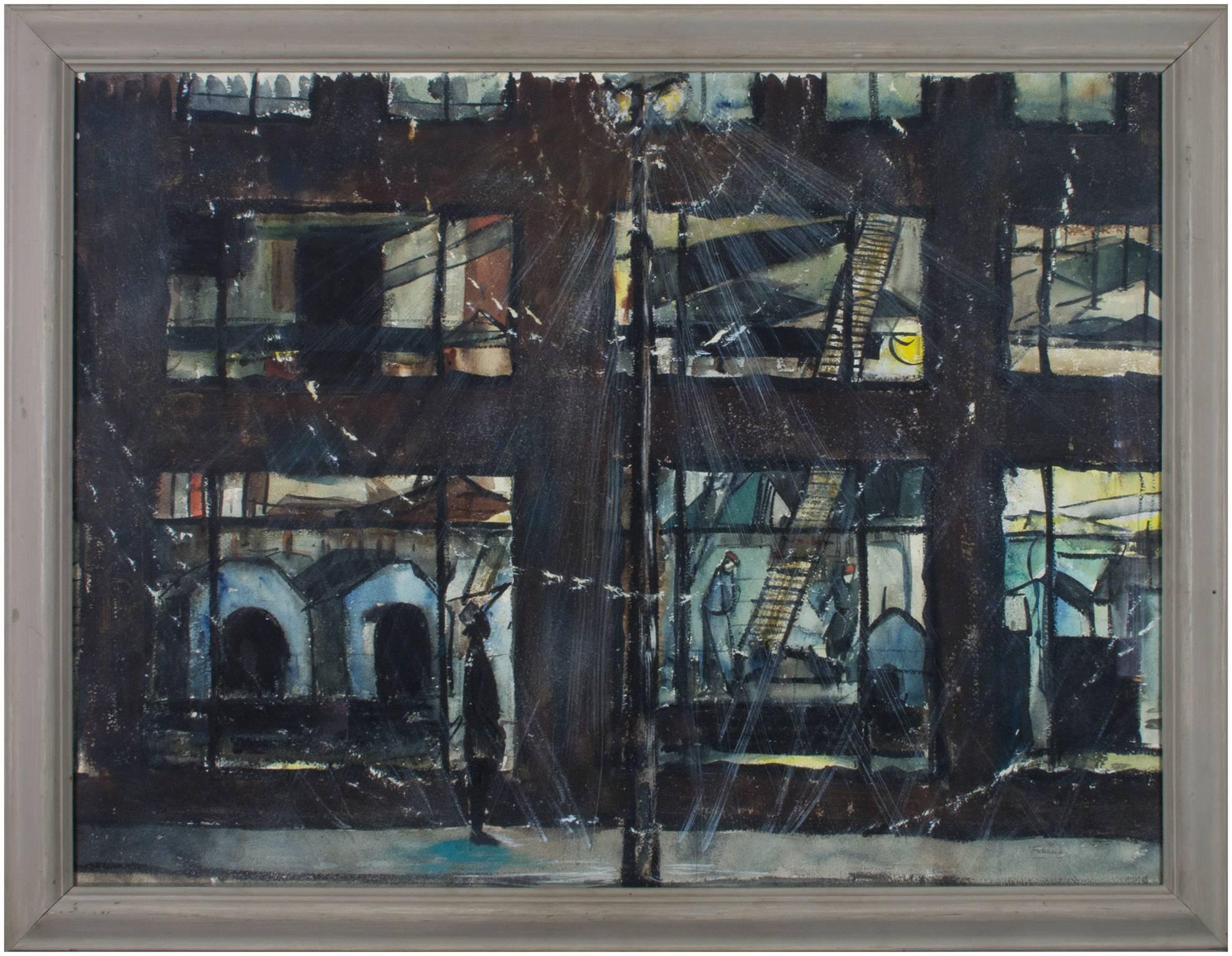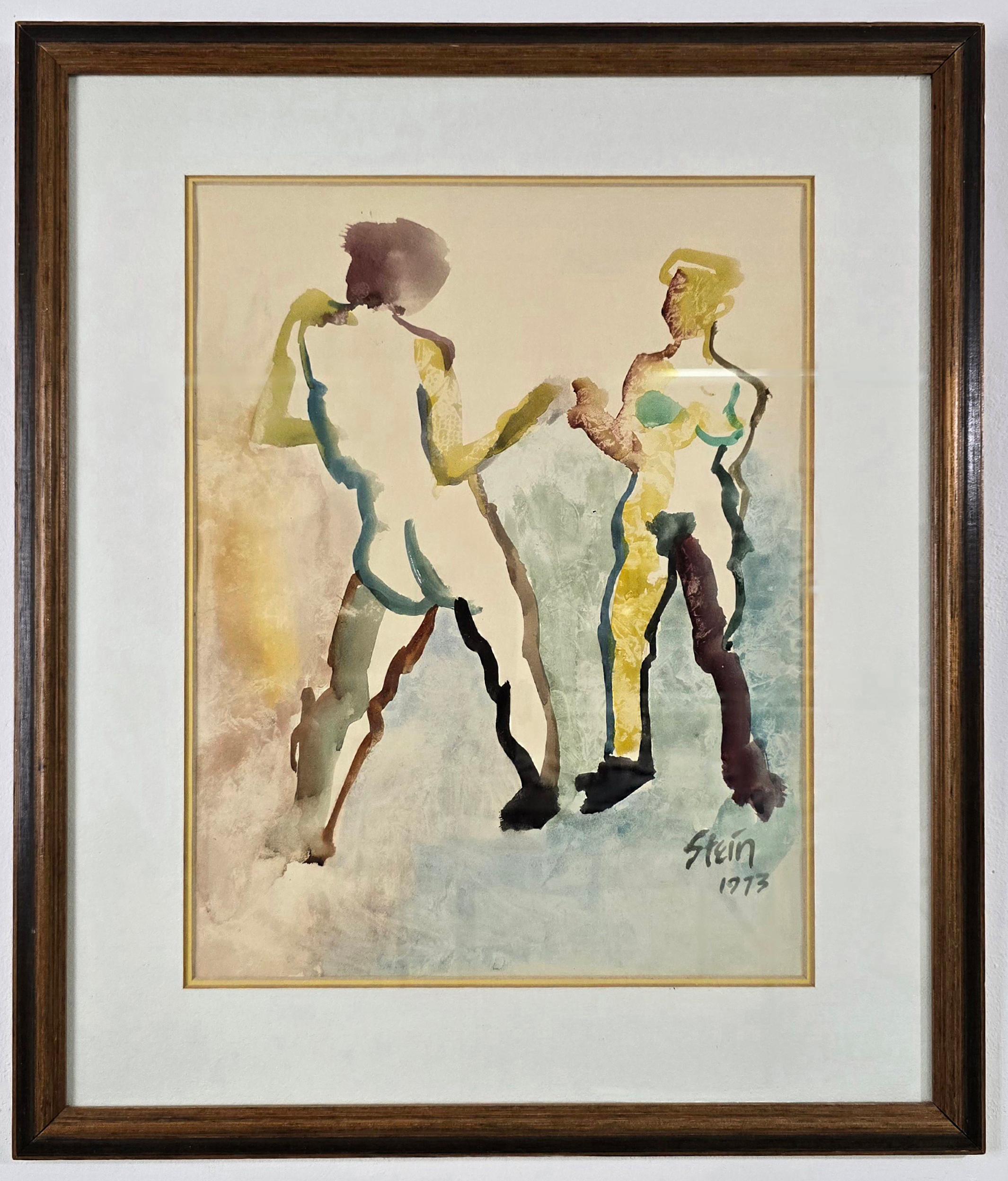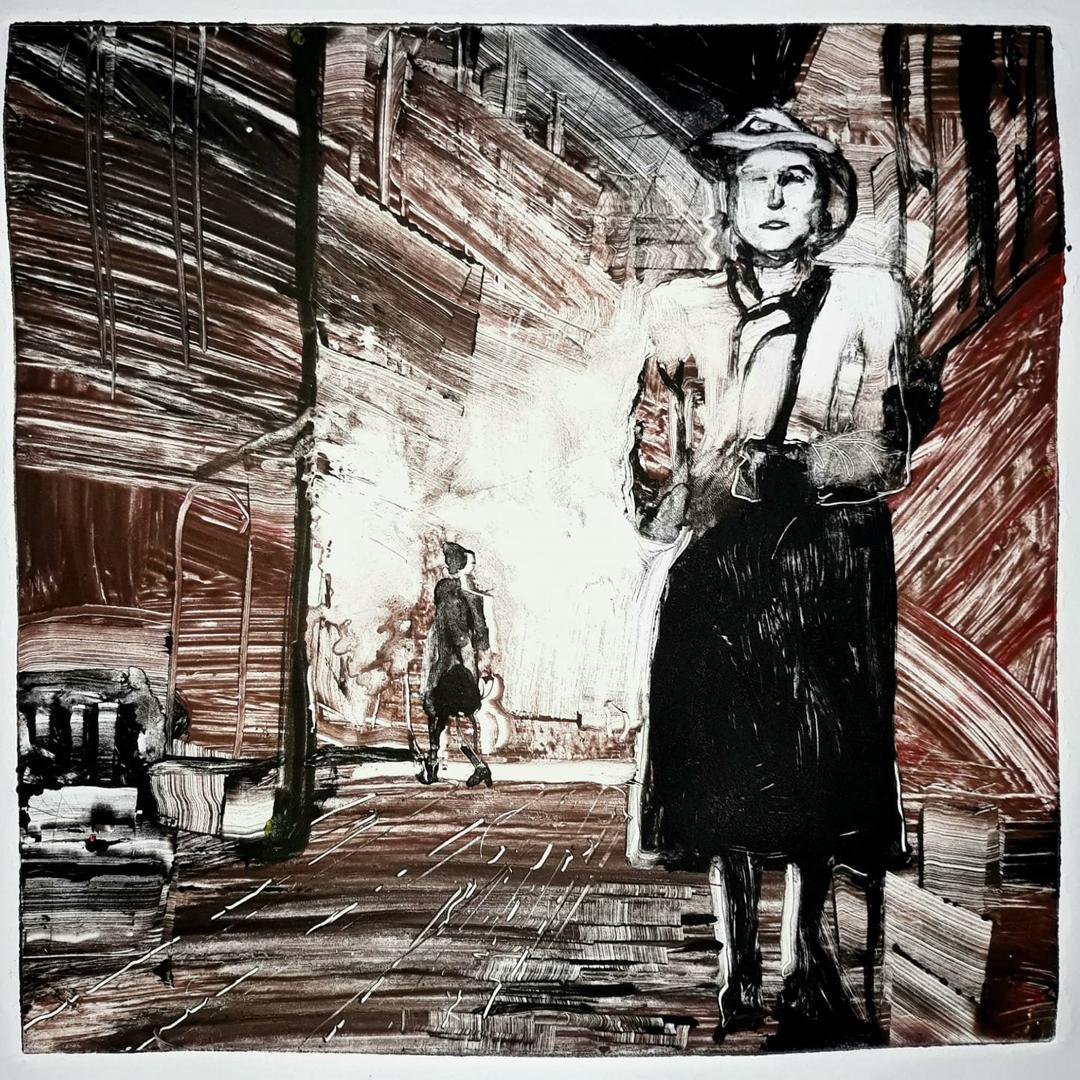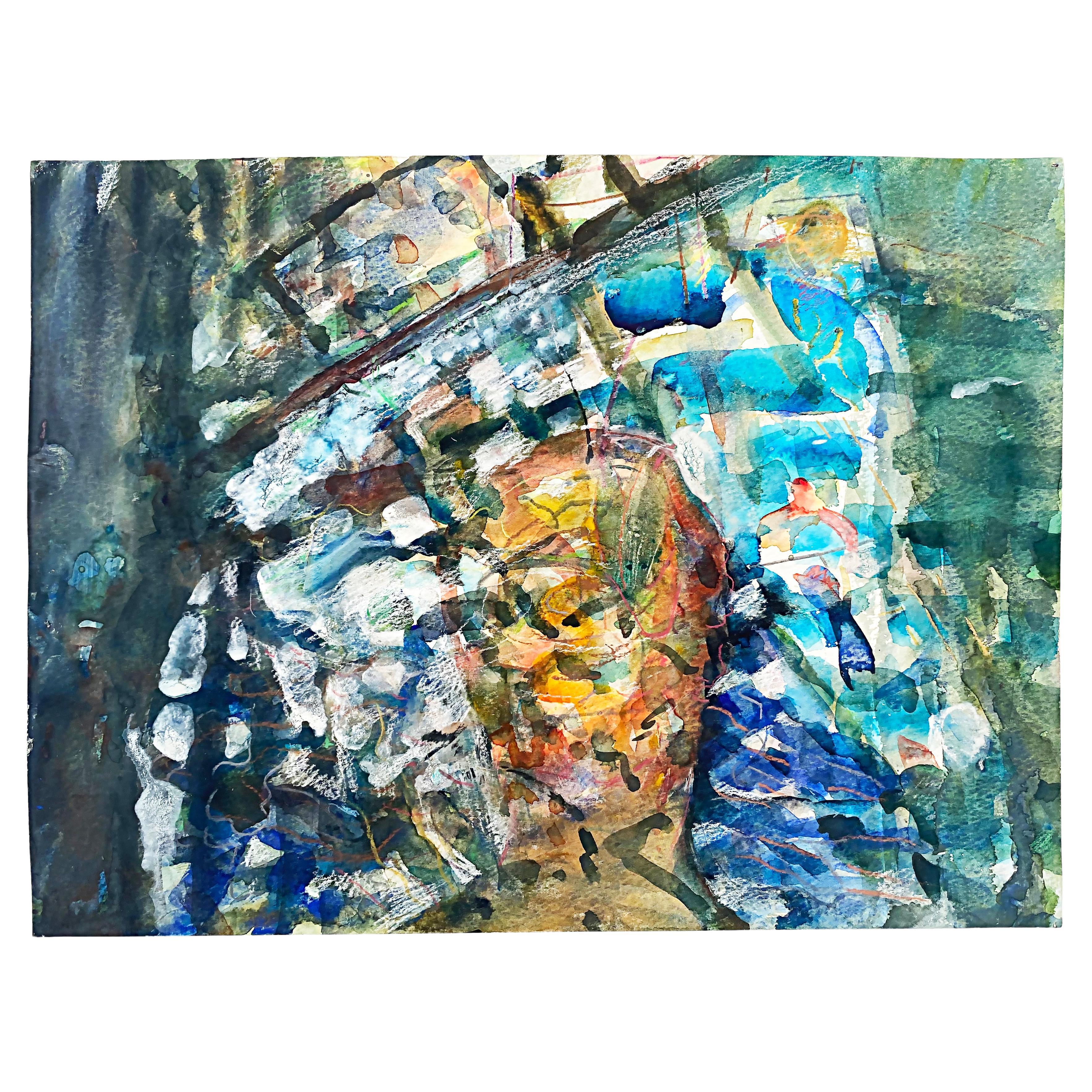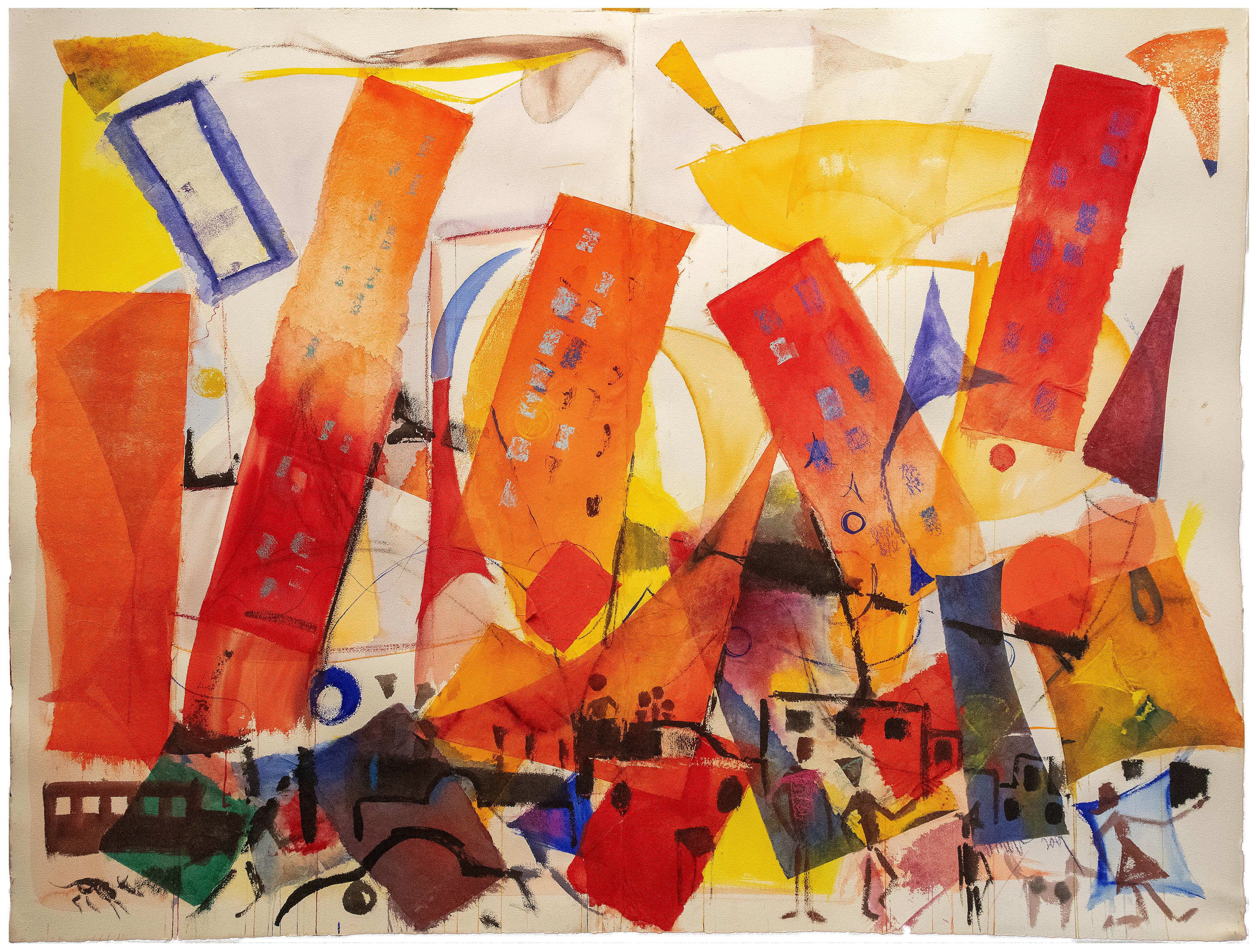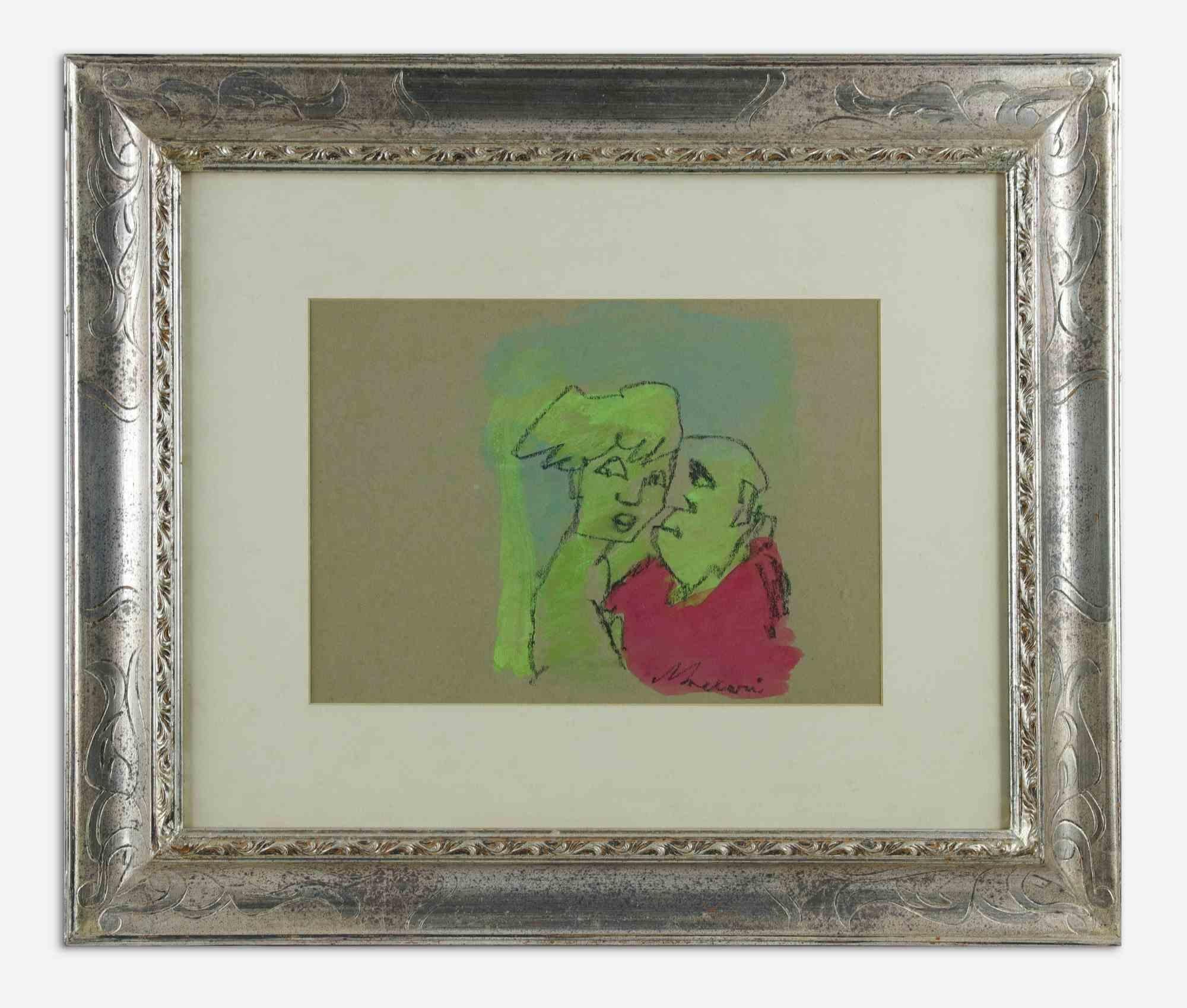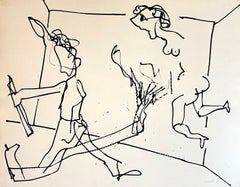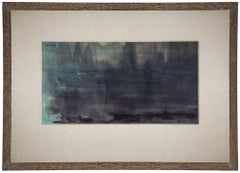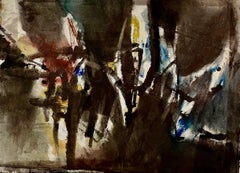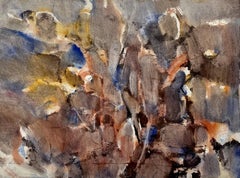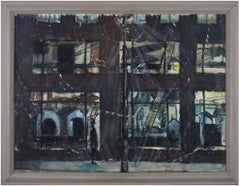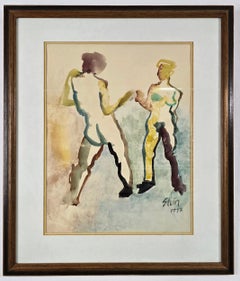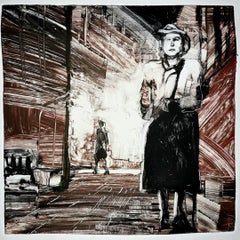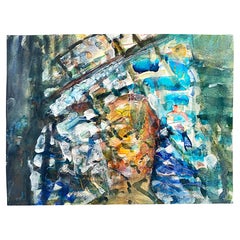Items Similar to Modernist Watercolor Painting "Passages in Darkness" NYC Businessmen
Want more images or videos?
Request additional images or videos from the seller
1 of 10
Elinore Schnurr-ColfleshModernist Watercolor Painting "Passages in Darkness" NYC Businessmen1986
1986
$950
£721.22
€824.93
CA$1,327.29
A$1,476.23
CHF 770.84
MX$17,964.19
NOK 9,844.85
SEK 9,232.73
DKK 6,156.74
Shipping
Retrieving quote...The 1stDibs Promise:
Authenticity Guarantee,
Money-Back Guarantee,
24-Hour Cancellation
About the Item
Schnurr has an art studio in Long Island City, Queens, New York.
Over the years she has exhibited widely. Her most recent solo shows were at the H. Pelham Curtis Gallery at the New Canaan Library in New Canaan, Connecticut and the Dougherty Gallery at Crescent Grill in Long Island City, both in 2014; in 2011 she
was one of four artists representing the United States in Nordart 2011 at Kunstwerk Carlshutte, Budelsdorf, Germany. Previous solo exhibitions were at the Atlanta Art Gallery in Atlanta, Georgia, Capricorn Galleries in Bethesda, Maryland, and the DFN
Gallery in New York City, to name a few. She was the recipient of the Thomas B. Clarke Award for figurative painting at the National Academy of Design (now, National Academy Museum) in New York in 1986 and the Second Place Award at the Butler
Institute of American Art Midyear in 2002. She also received an NEA Grant and a NYFA fellowship during these years. Her paintings are in museum collections including the Cleveland Museum of Art and the Smithsonian American Art Museum in Washington, D.C., the Museum of the City of New York, and the Museum of Fine Arts in St Petersburg, Florida, to name a few, and she has work in more than 50 corporate collections and hundreds of private collections in this country and abroad.
MUSEUM COLLECTIONS
Cleveland Museum of Art, Cleveland, OH
Museum of Fine Arts, St. Petersburg, FL
Museum of the City of New York, NY
Smithsonian Museum of American Art, Washington, DC
Cahoon Museum of American Art, Cotuit, Cape Cod, MA
Brooklyn Historical Society, Brooklyn, NY
SELECT GROUP EXHIBITIONS
Beach Elements IV (curated by Nancy Gesimondo), PLAXALL Gallery, Long Island City,
Members’ Exhibition, Edward Hopper House Art Center, Nyack, NY
America: Here and Now, curated by Eric Fischl, Buchanan Center for the Arts,
New York State of Mind, Flinn Gallery, Greenwich Library, Greenwich, CT
Wide Open 3 (curated by Charlotta Kotik, Curator Emerita of Contemporary Art, Brooklyn Museum of Art),
Kunstwerke Carlshutte, Budelsdorf, Germany
Wide Open 2 (curated by Nathan Trotman, Curator, Guggenheim Museum, NYC), Brooklyn Artists
National Midyear Exhibition, Butler Institute of American Art, Youngstown, OH
Painting the Town: Cityscapes of New York, Museum of the City of New York, New York, 165th Juried Exhibition, National Academy of Design, New York, NY
31st New England Exhibition (juried by Henry Geldzahler), Silvermine Guild
Recent Painting USA: The Figure, Museum of Modern Art, New York, NY
- Creator:Elinore Schnurr-Colflesh (1932, American)
- Creation Year:1986
- Dimensions:Height: 28 in (71.12 cm)Width: 33 in (83.82 cm)
- Medium:
- Movement & Style:
- Period:
- Condition:minor wear to frame.
- Gallery Location:Surfside, FL
- Reference Number:1stDibs: LU38212767732
About the Seller
4.9
Platinum Seller
Premium sellers with a 4.7+ rating and 24-hour response times
Established in 1995
1stDibs seller since 2014
1,784 sales on 1stDibs
Typical response time: <1 hour
- ShippingRetrieving quote...Shipping from: Surfside, FL
- Return Policy
Authenticity Guarantee
In the unlikely event there’s an issue with an item’s authenticity, contact us within 1 year for a full refund. DetailsMoney-Back Guarantee
If your item is not as described, is damaged in transit, or does not arrive, contact us within 7 days for a full refund. Details24-Hour Cancellation
You have a 24-hour grace period in which to reconsider your purchase, with no questions asked.Vetted Professional Sellers
Our world-class sellers must adhere to strict standards for service and quality, maintaining the integrity of our listings.Price-Match Guarantee
If you find that a seller listed the same item for a lower price elsewhere, we’ll match it.Trusted Global Delivery
Our best-in-class carrier network provides specialized shipping options worldwide, including custom delivery.More From This Seller
View AllNew York School Abstract Expressionist Drawing Watercolor Painting Carmen Cicero
By Carmen Cicero
Located in Surfside, FL
This is a stylized figurative abstract expressionist nude. This one is hand signed and dated.
From the style we are estimating it to the 1970's
They have abstract stylized erotic mal...
Category
1970s Abstract Expressionist Abstract Drawings and Watercolors
Materials
Ink, Watercolor
Night Rays, Abstract Expressionist Watercolor
By Murray Hantman
Located in Surfside, FL
Genre: Expressionist
Subject: Landscape
Medium: Watercolor
Surface: Paper
Country: United States
Dimensions: 16.75" x 23"
Dimensions w/Frame: 18" x 24.5"
Murray Hantman (1904–1999) ...
Category
Mid-20th Century Abstract Expressionist Abstract Drawings and Watercolors
Materials
Watercolor
Modernist Abstract Expressionist Watercolor Painting Bauhaus Weimar Pawel Kontny
By Pawel Kontny
Located in Surfside, FL
Abstract watercolor composition bearing the influence of the earlier color-block compositions of Paul Klee.
Pawel August Kontny, (Polish-German-American artist) He was born in Laura...
Category
20th Century American Modern Abstract Drawings and Watercolors
Materials
Watercolor, Archival Paper
Large Modernist Abstract Expressionist Watercolor Painting Bauhaus Weimar Artist
By Pawel Kontny
Located in Surfside, FL
Abstract watercolor composition bearing the influence of the earlier color-block compositions of Paul Klee.
Pawel August Kontny, (Polish-German-American artist) He was born in Laura...
Category
Mid-20th Century Abstract Expressionist Landscape Paintings
Materials
Watercolor, Archival Paper
New York School Abstract Expressionist Drawing Watercolor Painting Carmen Cicero
By Carmen Cicero
Located in Surfside, FL
This is a stylized figurative abstract expressionist nude. This one is hand signed and dated.
From the style we are estimating it to the 1970's
They have abstract stylized erotic mal...
Category
1970s Abstract Expressionist Abstract Drawings and Watercolors
Materials
Ink, Watercolor
Modernist Abstract Expressionist Watercolor Painting Bauhaus Weimar Artist
By Pawel Kontny
Located in Surfside, FL
Abstract watercolor composition bearing the influence of the earlier color-block compositions of Paul Klee.
Pawel August Kontny, (Polish-German-American artist) He was born in Laura...
Category
Mid-20th Century American Modern Abstract Drawings and Watercolors
Materials
Watercolor, Archival Paper
You May Also Like
Cityscape Modern Dark Cold Tones Winter Urban Everyday Life Watercolor Signed
By Joseph Ferrara
Located in Milwaukee, WI
"The Free Press-Composition" is a watercolor street scene created by Joseph Ferrara. The street is dark, evoking the feeling of night and cold. There are white rings expanding from t...
Category
1950s Modern Landscape Drawings and Watercolors
Materials
Watercolor
Signed, Watercolor on Paper. Framed Painting - Figurations 359.009
Located in New York, NY
Linda Stein, Figurations 359.009 - Signed, Watercolor on Paper, Framed Painting
Linda Stein's Figurations series are early paintings she made in the 1970s. They
show the artist's p...
Category
1970s Contemporary Figurative Drawings and Watercolors
Materials
Paper, Watercolor
Third Man 3, night, city scape, monochromatic, narrative
By Tom Bennett
Located in Brooklyn, NY
Dramatic imagery from FILM NOIR series of black and white monotypes, blending surrealistic mindscapes with stark realism
About Tom Bennett:
With quick brushstrokes, Tom Bennett crea...
Category
2010s American Modern Figurative Drawings and Watercolors
Materials
Archival Paper, Monotype
Warren Fischer Figurative Abstract Watercolor Painting on Paper
By Warren Fischer
Located in Miami, FL
Warren Fischer Figurative Abstract Watercolor Painting on Paper
Offered for sale is an abstract figurative watercolor painting on paper by Warren Fischer. This painting is loose an...
Category
1990s American Modern Paintings
Materials
Paper
"City - New York" Mixed Media watercolor signed and dated by Dan Muller 2009
By Dan Muller
Located in Milwaukee, WI
In "City-New York" by Dan Muller you can see people dancing, walking, cars driving by, and buildings. Dan Muller's use of mixed media brings to life the chaos and excitement that com...
Category
Early 2000s Abstract Abstract Drawings and Watercolors
Materials
Paper, Watercolor, Laid Paper, Tissue Paper
Figures - Charcoal and Watercolor by Mino Maccari - Mid-20th Century
By Mino Maccari
Located in Roma, IT
Figures is an original modern artwork realized by Mino Maccari in the mid-20th Century.
Mixed colored charcoal and watercolor drawing.
Hand signed on the lower margin.
Includes fr...
Category
Mid-20th Century Modern Figurative Drawings and Watercolors
Materials
Watercolor
